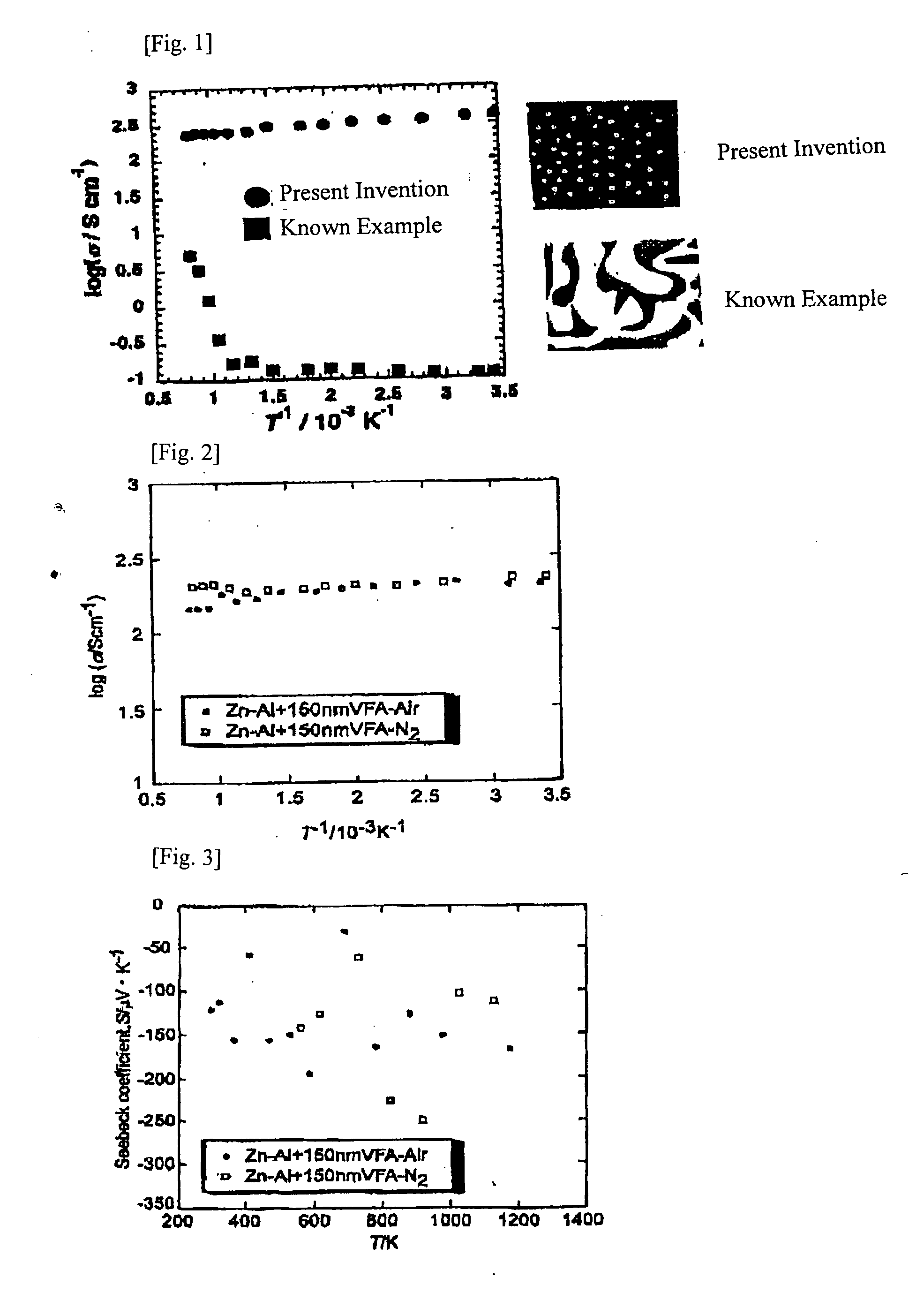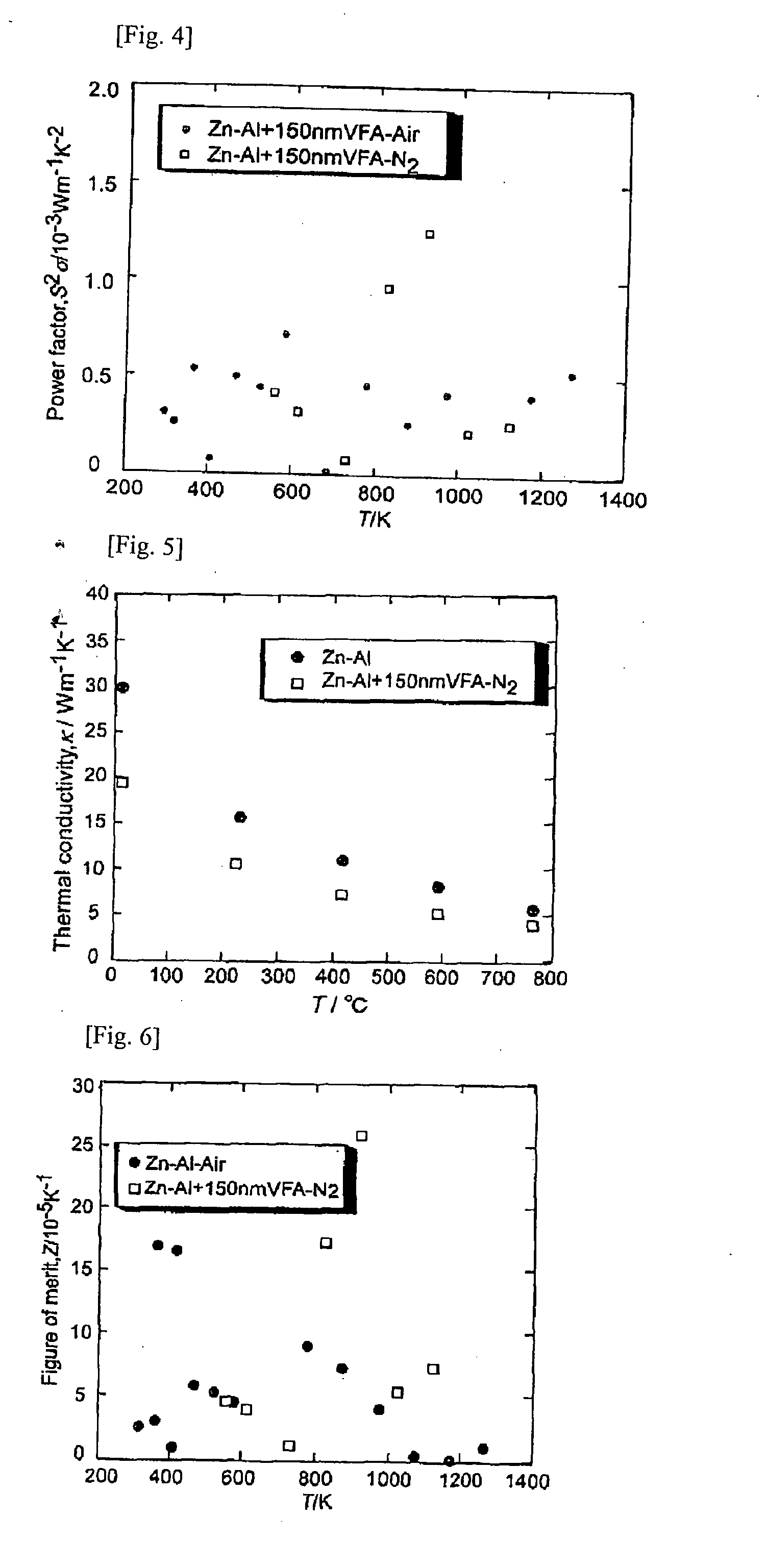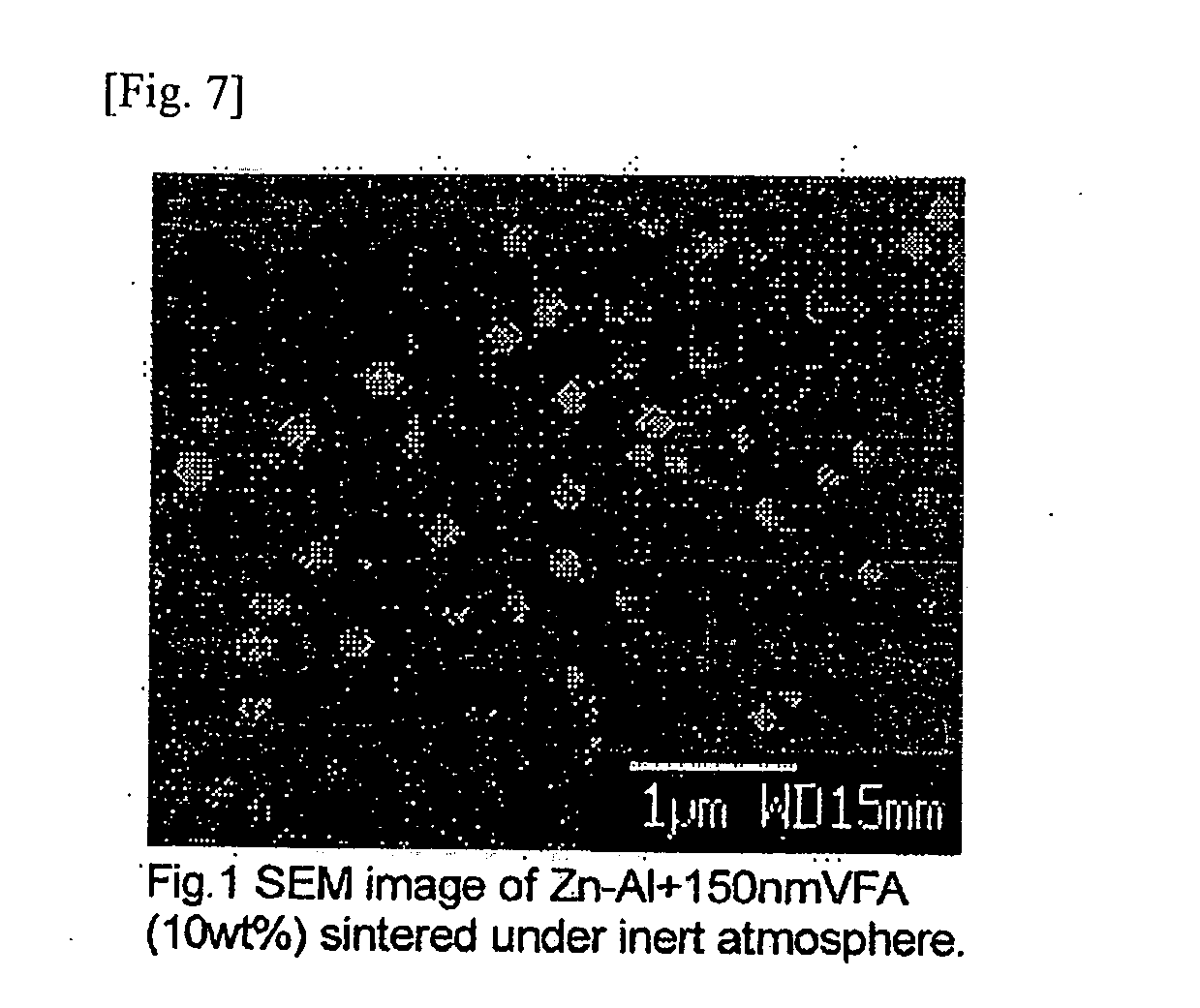Porous Thermoelectric Material and Process for Producing the Same
a thermoelectric material and porous technology, applied in the field of porous thermoelectric materials, can solve the problems of degradation of thermoelectric elements, unresolved costs for raw materials, refining, production, recycling, etc., and achieve the effects of reducing carbon dioxide emission, improving energy utilization efficiency, and negligible change of electrical conductivity
Inactive Publication Date: 2007-10-18
JAPAN SCI & TECH CORP
View PDF1 Cites 29 Cited by
- Summary
- Abstract
- Description
- Claims
- Application Information
AI Technical Summary
Benefits of technology
[0027] According to the thermoelectric material of the present invention, the figure of merit Z can be improved using the same element material while the electrical conductivity is negligibly changed. Consequently, this thermoelectric material enables power generation using heat in a field in which known thermoelectric materials have not been successfully used to date ...
Problems solved by technology
Having a stable reserve of energy for the future is the greatest problem mankind faces.
Problems such as environmental pollution caused by heavy elements constituting the thermoelectric materials; the degradation of thermoelectric elements; and the costs required for the raw materials, refining, production, and recycle have not yet been solved.
Method used
the structure of the environmentally friendly knitted fabric provided by the present invention; figure 2 Flow chart of the yarn wrapping machine for environmentally friendly knitted fabrics and storage devices; image 3 Is the parameter map of the yarn covering machine
View moreImage
Smart Image Click on the blue labels to locate them in the text.
Smart ImageViewing Examples
Examples
Experimental program
Comparison scheme
Effect test
example 1
[0039] As a void-forming agent (VFA) for introducing closed pores, polymethylmethacrylate (PMMA) particles having average particle diameters of 150 nm, 430 nm, and 1,800 nm were added to an oxide powder (a mixture of ZnO and γ-alumina of Zn:Al=98:2) in amounts of 1, 5, 10, and 15 weight percent. These samples were sintered under a N2 atmosphere at 1,400° C. for 10 hours.
the structure of the environmentally friendly knitted fabric provided by the present invention; figure 2 Flow chart of the yarn wrapping machine for environmentally friendly knitted fabrics and storage devices; image 3 Is the parameter map of the yarn covering machine
Login to View More PUM
| Property | Measurement | Unit |
|---|---|---|
| Length | aaaaa | aaaaa |
| Length | aaaaa | aaaaa |
| Temperature | aaaaa | aaaaa |
Login to View More
Abstract
In a thermoelectric conversion material composed of a porous material, continuous electrical conduction paths are provided by forming voids in the form of independent closed pores or independent closed air tubes inside the material. For example, in producing a sintered body of a thermoelectric material, microparticles having a particle diameter of 1 μm or less serving as a void-forming agent are mixed in a base powder, and in sintering, the sintering atmosphere or sintering temperature is controlled so that after the densification of a solid part formed by sintering the base powder proceeds, the microparticles of the void-forming agent are gasified, thereby producing a porous thermoelectric material having a structure in which minute independent closed pores having an average pore diameter of 1 μm or less are dispersed.
Description
TECHNICAL FIELD [0001] The present invention relates to a porous thermoelectric material in which the thermoelectric figure of merit Z is improved by forming independent closed pores or independent closed air tubes while continuous electrical conduction paths are ensured inside the material, and a process for producing the same. BACKGROUND ART [0002] Having a stable reserve of energy for the future is the greatest problem mankind faces. Thermoelectric power generation has attracted attention as an environment-conscious energy-saving technique in which unutilized energy such as industrial waste heat can be converted into electrical energy and recovered. All the thermoelectric materials that are practically used now, such as Bi2Te3, are nonoxides. Problems such as environmental pollution caused by heavy elements constituting the thermoelectric materials; the degradation of thermoelectric elements; and the costs required for the raw materials, refining, production, and recycle have not...
Claims
the structure of the environmentally friendly knitted fabric provided by the present invention; figure 2 Flow chart of the yarn wrapping machine for environmentally friendly knitted fabrics and storage devices; image 3 Is the parameter map of the yarn covering machine
Login to View More Application Information
Patent Timeline
 Login to View More
Login to View More IPC IPC(8): H01L35/00B22F3/11B22F5/10C04B38/06H01L35/22H01L35/34
CPCC04B38/06C04B2111/0081H01L35/22H01L35/34C04B35/00C04B38/0054C04B38/0061C04B35/453H10N10/855H10N10/01
Inventor OHTAKI, MICHITAKA
Owner JAPAN SCI & TECH CORP
Features
- R&D
- Intellectual Property
- Life Sciences
- Materials
- Tech Scout
Why Patsnap Eureka
- Unparalleled Data Quality
- Higher Quality Content
- 60% Fewer Hallucinations
Social media
Patsnap Eureka Blog
Learn More Browse by: Latest US Patents, China's latest patents, Technical Efficacy Thesaurus, Application Domain, Technology Topic, Popular Technical Reports.
© 2025 PatSnap. All rights reserved.Legal|Privacy policy|Modern Slavery Act Transparency Statement|Sitemap|About US| Contact US: help@patsnap.com



